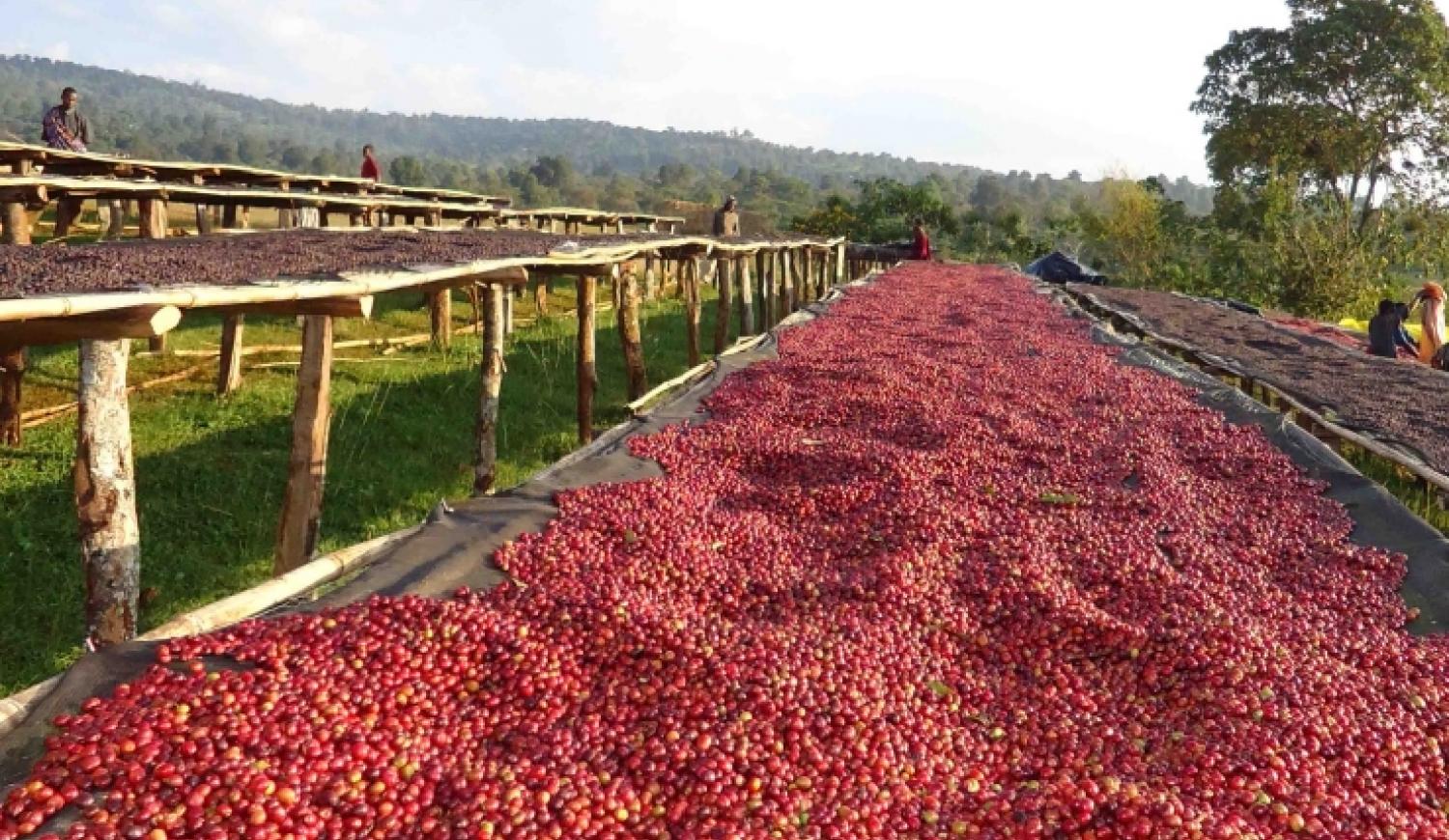|
Volume : VI, Issue : II, March - 2016 COFFEE ECONOMY OF INDIA: AN ECONOMIC ANALYSIS S.T Bagalkoti, Pallavi Paga DOI : 10.9780/22307850, By : Laxmi Book Publication Abstract : The coffee is the second most traded commodity in the world after oil and the present study focuses on an economic analysis of coffee production and exports from India and worldwide. It overviews the trends and patterns of coffee production, exports from India and the world. The study shows that coffee production has positive and significance relation with coffee exports in India and the world. The study period is post reform period with little comparison to pre reform period, the data bases are taken from Coffee Board of India for domestic analysis and International Coffee Organisation for global level analysis. The study attempted to find the casual relation between coffee production and coffee exports during post reform period with comparison at global level and found significant relations. Keywords : Article : Cite This Article : S.T Bagalkoti, Pallavi Paga(2016). COFFEE ECONOMY OF INDIA: AN ECONOMIC ANALYSIS. Indian Streams Research Journal, Vol. VI, Issue. II, DOI : 10.9780/22307850, http://isrj.org/UploadedData/7978.pdf References : - Rajković, M. B. Gorica Vuković, L. Perić, Mirjana Demin, Jovanka Laličić and Divna Kovačević “Analyzing of Coffee Quality with Different Methods” (2004) Journal of Agricultural Sciences, Vol. 49, No 1, Pages 87-96.
- Syarief, Rizal., Elida, Novita., Erliza, Noor and Sri Mulato (2012) “Smallholder Coffee Processing Design Using Wet Technology Based On Clean Production,” Journal of Applied Sciences in Environmental Sanitation, Vol 7, No 2: 93-102, June, 2012.
- Ambinakudige, S. 2006. Differential impacts of commodification of agriculture in the Western Ghats of India: an extended environmental entitlement analysis. Ph.D. dissertation. Tallahassee: Florida State University.
- Achoth, Lalith (2005) Report On Surveys On Coffee Holdings and Coffee Market Chain in India in Relation to Mould Contamination in Coffee, Report: Coffee Board Of India, Bangalore & Food & Agricultural Organization Of United Nations, Rome, June 2005.
- Shrinidhi Ambinakudige (2011) “National Parks, coffee and NTFPs: the livelihood capabilities of Adivasis in Kodagu, India” Journal of Political Ecology Vol. 18, 2011.
- Achoth, Lalith (2005) Report On Surveys On Coffee Holdings and Coffee Market Chain in India in Relation to Mould Contamination in Coffee, Report: Coffee Board Of India, Bangalore & Food & Agricultural Organization Of United Nations, Rome, June 2005.
- Syarief, Rizal., Elida, Novita., Erliza, Noor and Sri Mulato (2012) “Smallholder Coffee Processing Design Using Wet Technology Based On Clean Production,” Journal of Applied Sciences in Environmental Sanitation, Vol 7, No 2: 93-102, June, 2012.
- Shrinidhi Ambinakudige (2011) “National Parks, coffee and NTFPs: the livelihood capabilities of Adivasis in Kodagu, India” Journal of Political Ecology Vol. 18, 2011.
- Rajković, M. B. Gorica Vuković, L. Perić, Mirjana Demin, Jovanka Laličić and Divna Kovačević “Analyzing of Coffee Quality with Different Methods” (2004) Journal of Agricultural Sciences, Vol. 49, No 1, Pages 87-96.
- Ambinakudige, S. 2006. Differential impacts of commodification of agriculture in the Western Ghats of India: an extended environmental entitlement analysis. Ph.D. dissertation. Tallahassee: Florida State University.
- Achoth, Lalith (2005) Report On Surveys On Coffee Holdings and Coffee Market Chain in India in Relation to Mould Contamination in Coffee, Report: Coffee Board Of India, Bangalore & Food & Agricultural Organization Of United Nations, Rome, June 2005.
- Shrinidhi Ambinakudige (2011) “National Parks, coffee and NTFPs: the livelihood capabilities of Adivasis in Kodagu, India” Journal of Political Ecology Vol. 18, 2011.
- Rajković, M. B. Gorica Vuković, L. Perić, Mirjana Demin, Jovanka Laličić and Divna Kovačević “Analyzing of Coffee Quality with Different Methods” (2004) Journal of Agricultural Sciences, Vol. 49, No 1, Pages 87-96.
- Syarief, Rizal., Elida, Novita., Erliza, Noor and Sri Mulato (2012) “Smallholder Coffee Processing Design Using Wet Technology Based On Clean Production,” Journal of Applied Sciences in Environmental Sanitation, Vol 7, No 2: 93-102, June, 2012.
- Ambinakudige, S. 2006. Differential impacts of commodification of agriculture in the Western Ghats of India: an extended environmental entitlement analysis. Ph.D. dissertation. Tallahassee: Florida State University.
- Shrinidhi Ambinakudige (2011) “National Parks, coffee and NTFPs: the livelihood capabilities of Adivasis in Kodagu, India” Journal of Political Ecology Vol. 18, 2011.
- Ambinakudige, S. 2006. Differential impacts of commodification of agriculture in the Western Ghats of India: an extended environmental entitlement analysis. Ph.D. dissertation. Tallahassee: Florida State University.
- Achoth, Lalith (2005) Report On Surveys On Coffee Holdings and Coffee Market Chain in India in Relation to Mould Contamination in Coffee, Report: Coffee Board Of India, Bangalore & Food & Agricultural Organization Of United Nations, Rome, June 2005.
- Rajković, M. B. Gorica Vuković, L. Perić, Mirjana Demin, Jovanka Laličić and Divna Kovačević “Analyzing of Coffee Quality with Different Methods” (2004) Journal of Agricultural Sciences, Vol. 49, No 1, Pages 87-96.
- Syarief, Rizal., Elida, Novita., Erliza, Noor and Sri Mulato (2012) “Smallholder Coffee Processing Design Using Wet Technology Based On Clean Production,” Journal of Applied Sciences in Environmental Sanitation, Vol 7, No 2: 93-102, June, 2012.
|
Article Post Production
No data exists for the row/column.
|